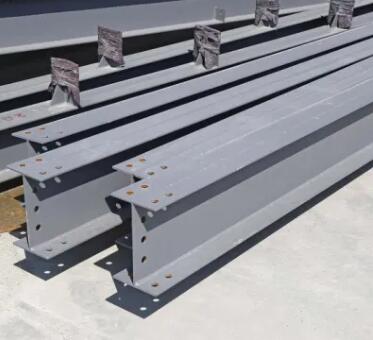The Cornerstone of Construction: The Indispensable Role of Structural Materials in Engineering
2024-01-06
Introduction:
In the grand tapestry of engineering and construction, the unsung heroes that provide the framework, stability, and resilience to structures are none other than structural materials. From towering skyscrapers that pierce the sky to intricate bridges that span vast expanses, the role of structural materials is unparalleled. In this blog post, we delve into the pivotal role that structural materials play in shaping the landscape of engineering and construction.
The Foundation of Stability:
1. Load-Bearing Elements:
- Structural materials form the very foundation of load-bearing elements in buildings, bridges, and various infrastructures. They shoulder the responsibility of supporting the weight of structures and the loads they may encounter.
2. Framework for Formidable Structures:
- The choice of structural materials determines the framework of a structure, influencing its shape, height, and overall design. Whether it's the skeletal frame of a high-rise or the arches of a bridge, structural materials provide the essential framework for architects and engineers to bring their visions to life.
Ensuring Safety and Reliability:
1. Safety Compliance:
- Structural materials are selected and engineered to meet stringent safety standards. The reliability of these materials ensures that structures can withstand external forces, including wind, seismic activity, and live loads, while maintaining the safety of occupants.
2. Durability Against the Elements:
- Structural materials are exposed to a myriad of environmental factors, from changing weather conditions to corrosive agents. The materials chosen must exhibit durability, resisting degradation over time and ensuring the long-term integrity of the structure.
Balancing Strength and Efficiency:
1. Strength-to-Weight Ratio:
- Engineers face the constant challenge of balancing strength with efficiency. Structural materials with a high strength-to-weight ratio allow for the creation of structures that are both robust and efficient, optimizing material usage without compromising stability.
2. Cost-Effective Construction:
- The selection of appropriate structural materials influences construction costs. Balancing the cost-effectiveness of materials with their performance is a critical aspect of engineering projects, ensuring that construction remains economically viable.
Facilitating Innovation:
1. Architectural Innovation:
- Structural materials serve as the canvas for architectural innovation. From the sweeping curves of modern designs to the integration of sustainable materials, the choices made in structural materials push the boundaries of what is possible in construction.
2. Material Advancements:
- Advances in material science lead to the development of new and innovative structural materials. Nanomaterials, composites, and smart materials open doors to novel engineering solutions, contributing to the continuous evolution of the construction industry.
Sustainability and Environmental Impact:
1. Green Construction Practices:
- In an era where sustainability is paramount, the role of structural materials extends to incorporating eco-friendly and recycled materials. Green construction practices aim to minimize the environmental footprint of structures and promote responsible building practices.
2. Life Cycle Assessment:
- Structural materials are evaluated not only for their initial properties but also for their environmental impact throughout their life cycle. This assessment helps engineers make informed decisions regarding material selection, considering factors such as manufacturing, transportation, and end-of-life considerations.
Conclusion:
In the dynamic realm of engineering and construction, structural materials stand as the bedrock upon which our built environment rests. Their role in providing stability, ensuring safety, and facilitating innovation cannot be overstated. As engineers and architects continue to push the boundaries of design and construction, the significance of structural materials remains central to the creation of structures that not only stand tall but also stand the test of time. In every brick laid and every beam erected, structural materials silently contribute to the realization of human ingenuity and the enduring legacy of our architectural achievements.



